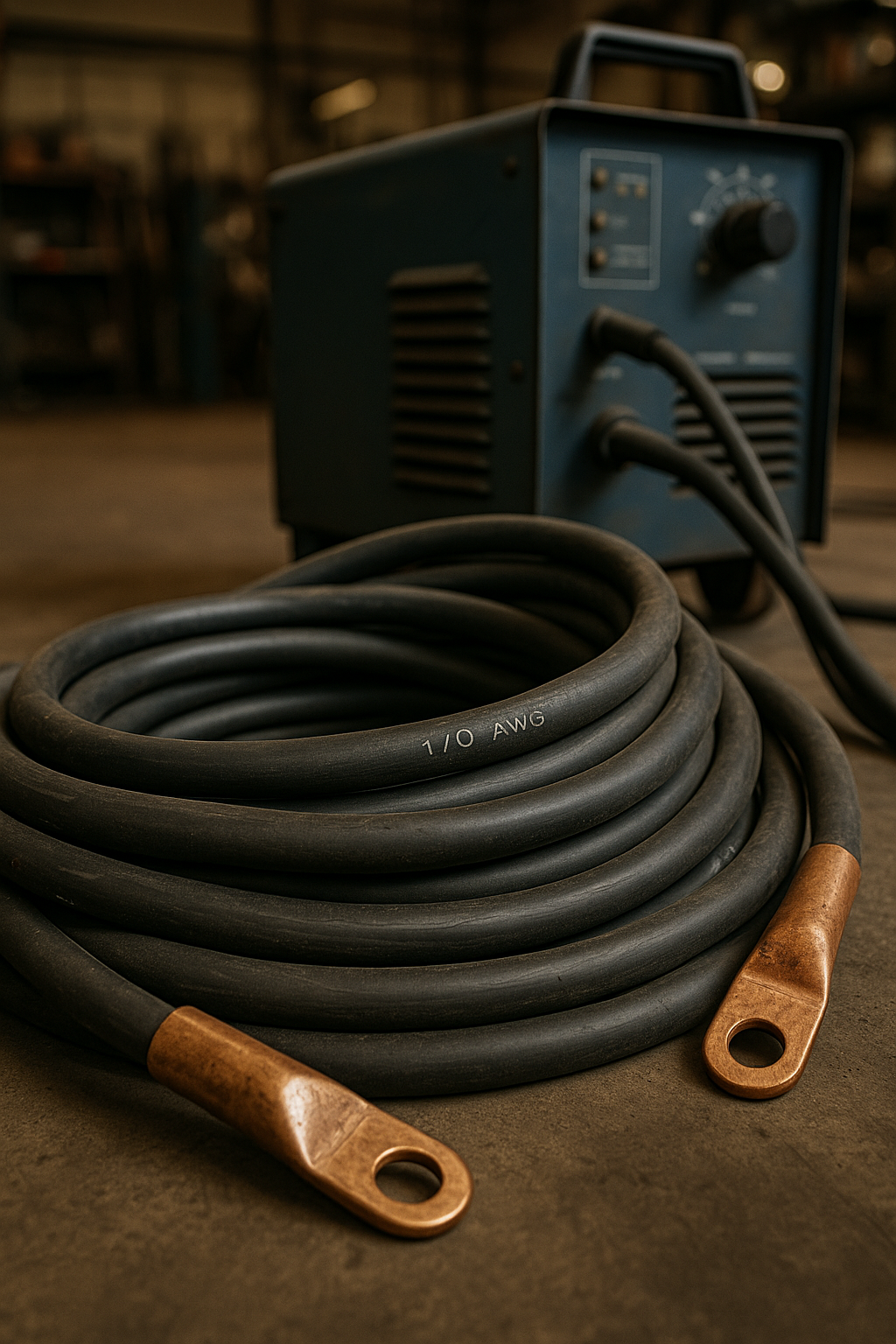When it comes to welding performance and safety, your choice of welding cable is just as important as your machine or electrode. Whether you’re setting up a new rig or upgrading your current leads, understanding cable size and lead length can make a noticeable difference in weld quality and efficiency. In this guide, we break down the key factors to help you choose the right welding cable for your needs.
What Is Welding Cable?
Welding cable is a flexible, high-amperage conductor used to connect the power source (welder) to the work clamp and electrode holder. It’s built with a heavy-duty rubber jacket and fine copper strands, designed to withstand the demanding conditions of welding environments—abrasion, oil, flame, and movement.
Understanding Cable Sizes (Gauge)
Welding cable sizes are measured in American Wire Gauge (AWG), where smaller numbers mean thicker cables. Common sizes include:
- #6 AWG – Suitable for light-duty work up to ~50 ft
- #4 AWG – Good for medium-duty up to 75 ft
- #2 AWG – Used for higher amperage up to 100 ft
- #1 or 1/0 AWG – Heavy-duty applications, great for long distances or high-amperage machines
- 2/0 or 3/0 AWG – Industrial-grade welding or extremely long lead runs
The thicker the cable, the more amperage it can carry without overheating or voltage drop. For example, a #1 AWG can carry 200 amps over 100 feet without noticeable performance issues, while a #6 might struggle past 30 feet with the same amperage.
Why Lead Length Matters
Lead length impacts voltage drop—longer cables create more electrical resistance. That resistance can reduce power at the arc, affecting penetration and weld quality. To minimize voltage loss:
- Keep leads as short as practical
- Use a thicker cable for longer distances
- Avoid excessive splicing or poor connectors
As a rule of thumb, if your leads are longer than 50 feet, consider sizing up your cable to the next thicker gauge.
Match Cable to Your Machine’s Output
Check your welder’s max output amperage and duty cycle. If you’re running a 250A MIG welder at 60% duty cycle, you’ll want a cable rated comfortably above that (like 1/0 AWG) to avoid overheating. Undersized cables not only reduce performance, they’re also a fire hazard.
Single vs. Paired Cables
For stick or TIG welding, you’ll often use two separate leads—an electrode and a ground. For wire-feed machines, the ground cable is separate, and the power flows through the MIG gun. In all cases, make sure both leads are properly rated and matched in length when possible to ensure balanced resistance.
Choosing the Right Jacket Type
Most welding cables come with either:
- EPDM Rubber – Flexible, oil-resistant, good for shop use
- Neoprene – Weather and abrasion-resistant, good for outdoor/rough use
- SJOOW/SOOW – Multi-conductor variants are often used for extension leads or industrial setups
If you’re working in cold environments or with frequent cable coiling/uncoiling, go for a high-flex cable with fine copper strands—easier to manage and less prone to cracking.
Quick Cable Sizing Table
| Amps | Max Length (ft) | Recommended Size |
|---|---|---|
| 150 | 50 ft | #4 AWG |
| 200 | 75 ft | #2 AWG |
| 250 | 100 ft | 1/0 AWG |
| 300+ | 100+ ft | 2/0 or 3/0 AWG |
Always round up for safety and efficiency.
Final Tips
- Inspect your cable for cuts, worn insulation, or corrosion at the lugs
- Keep connections tight and clean
- Consider quick-connect ends for modular setups
Conclusion
Picking the right welding cable size and lead length isn’t just a technical detail—it directly affects your arc stability, equipment lifespan, and safety. When in doubt, go thicker and shorter. It’s a small investment that pays off every time you strike an arc.
Note: This post may contain affiliate links, and we may earn a commission if you purchase through them, at no extra cost to you.


Leave a Reply